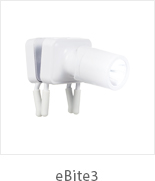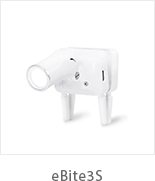| Title | ### All About AC Condensers: Function, Maintenance, and Common Issues |
|
Replacing a heater core can be a complex and labor-intensive task, often requiring removal of the dashboard to access the component. It is recommended to have a qualified mechanic perform this repair to ensure it is done correctly and safely. The AC condenser is located outside the home and works in conjunction with the compressor to release heat from the refrigerant that has been absorbed from the indoor air. When the hot refrigerant gas flows into the condenser coil, it releases heat to the outdoor air, causing the refrigerant to cool down and change back into a liquid form. This process allows the refrigerant to circulate back into the evaporator coil inside the home to cool the air once again. An AC condenser is a vital component of an air conditioning system that plays a key role in removing heat from the indoor air. Understanding how the condenser works, how to maintain it, and common issues that may arise can help ensure the optimal performance and longevity of your HVAC system. The purpose of the differential is to allow the wheels on the same axle to rotate at different speeds while still receiving equal power. This is necessary because when a vehicle makes a turn, the outer wheel has to cover more distance than the inner wheel. If both wheels were locked together and forced to rotate at the same speed, it would result in either wheel slipping or causing undue stress on the drivetrain. If you suspect that your fuel pump is failing, it is important to have it inspected and replaced by a qualified mechanic. Ignoring issues with the fuel pump can lead to engine damage and costly repairs. By staying informed about the function, maintenance, and common issues related to AC condensers, homeowners can ensure the smooth operation of their air conditioning system. Regular maintenance and prompt repairs when issues arise are essential for maximizing the lifespan and efficiency of the AC condenser. Introduction: The fuel pump is a crucial component in a vehicle's fuel system. It plays a vital role in ensuring that Adaptive Fuel Strategy is efficiently delivered from the fuel tank to the engine. Understanding how the fuel pump works and the signs of potential issues can help you maintain the performance and longevity of your vehicle. - Open differentials are the most common type and allow each wheel to rotate at different speeds while distributing power evenly. However, they are not ideal for off-road or high-performance applications as they can easily lose traction. Overall, automatic transmissions provide a convenient and comfortable driving experience for many motorists. They eliminate the need for manual gear shifting, making driving easier and less stressful, especially in heavy traffic or city driving conditions. However, it is important to follow the manufacturer's recommendations for maintenance and servicing to ensure the longevity and proper functioning of the automatic transmission system. Overall, the differential is a critical component that enables smooth and efficient driving, especially during turning maneuvers. Regular maintenance and proper care of the differential can help prolong its lifespan and ensure optimal performance of the vehicle. There are different types of automatic transmissions available, including traditional torque converter automatics, continuously variable transmissions (CVTs), and dual-clutch transmissions (DCTs). Each type has its own unique characteristics and benefits, catering to different driving preferences and needs. - Limited-slip differentials improve upon the open differential design by providing some resistance to wheel slippage. This helps to distribute power more effectively to the wheel with better traction, improving performance in slippery or challenging driving conditions. How Does a Fuel Pump Work? When you start your vehicle, the fuel pump is activated to pressurize the fuel system and deliver fuel to the engine. The pump creates suction, drawing fuel from the tank through the fuel lines and into the engine. The fuel is then injected into the combustion chamber where it mixes with air and is ignited to generate power for the vehicle. - Locking differentials offer the most traction and stability by physically locking both wheels on an axle together, ensuring equal power distribution. This type of differential is commonly found in off-road vehicles and trucks designed for heavy-duty use. Another key benefit of tire rotation is improved traction and handling. As tires wear down, they can develop uneven tread patterns which can affect the vehicle's grip on the road. By rotating the tires, you can maintain more consistent tread depth across all four tires, resulting in better traction, handling, and overall performance. In conclusion, the heater core is a crucial component of a vehicle's heating system, responsible for providing warmth to passengers during cold weather. Regular maintenance and prompt repairs are important to ensure the heater core functions properly and efficiently. If you suspect an issue with your vehicle's heating system, it is best to have it inspected and repaired by a professional mechanic. |
|











